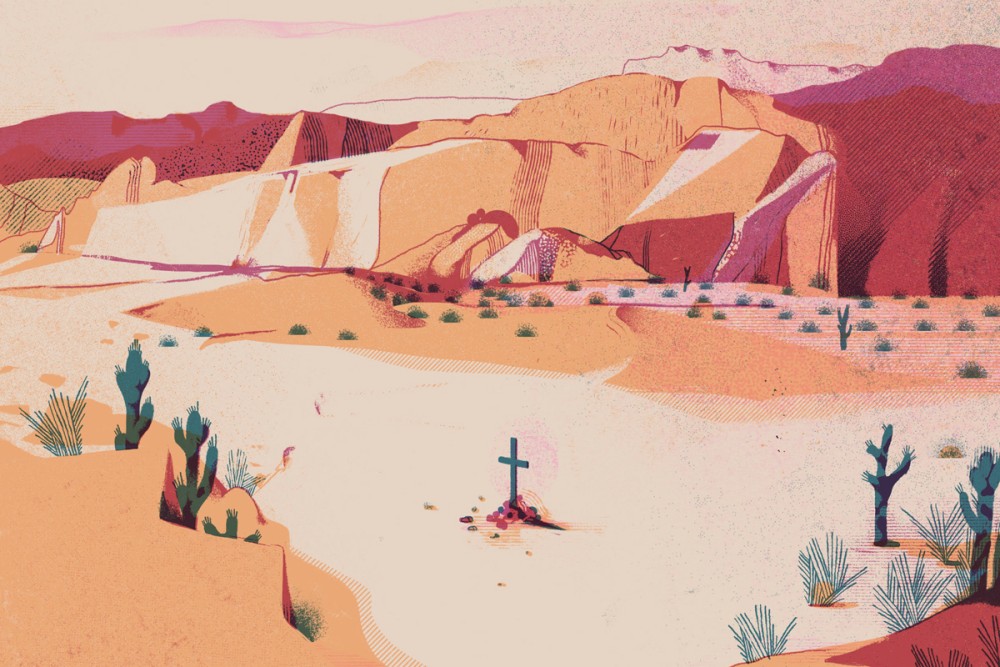A liturgy in the borderlands
Alvaro Enciso plants crosses where migrants have died, to keep them from disappearing into oblivion.

At 7:30 a.m. I pull into the BorderLinks parking lot in South Tucson, the meetup spot for Alvaro Enciso’s weekly pilgrimage into the borderlands with his crosses. We load the two Samaritan SUVs with jugs of water, and then the eight of us pile in and head down Interstate 19 toward the border.
Our caravan exits and goes west somewhere before Nogales—still 20 miles from the border. As we drive into the desolate landscape, after a bend in the road a makeshift checkpoint suddenly appears. A federal agent stops us, plods around our vehicles while peering through every window, then asks each of us if we’re citizens.
We’re within 100 miles of the border, which means we’re in what many have called the “Constitution-free zone” where US Customs and Border Protection has been granted authorization under a 1953 law to conduct warrantless searches and seizures, despite the protections of the Fourth Amendment. In her book Illegal, political scientist Elizabeth Cohen explains how the 1976 Supreme Court decision in United States v. Martinez-Fuerte has empowered CBP agents to “engage in acts that, for other law-enforcement officers, would be considered profiling.” This borderlands zone circles the nation, encompassing all land within 100 miles of any national boundary, land or water. It includes the majority of the people in the country.




